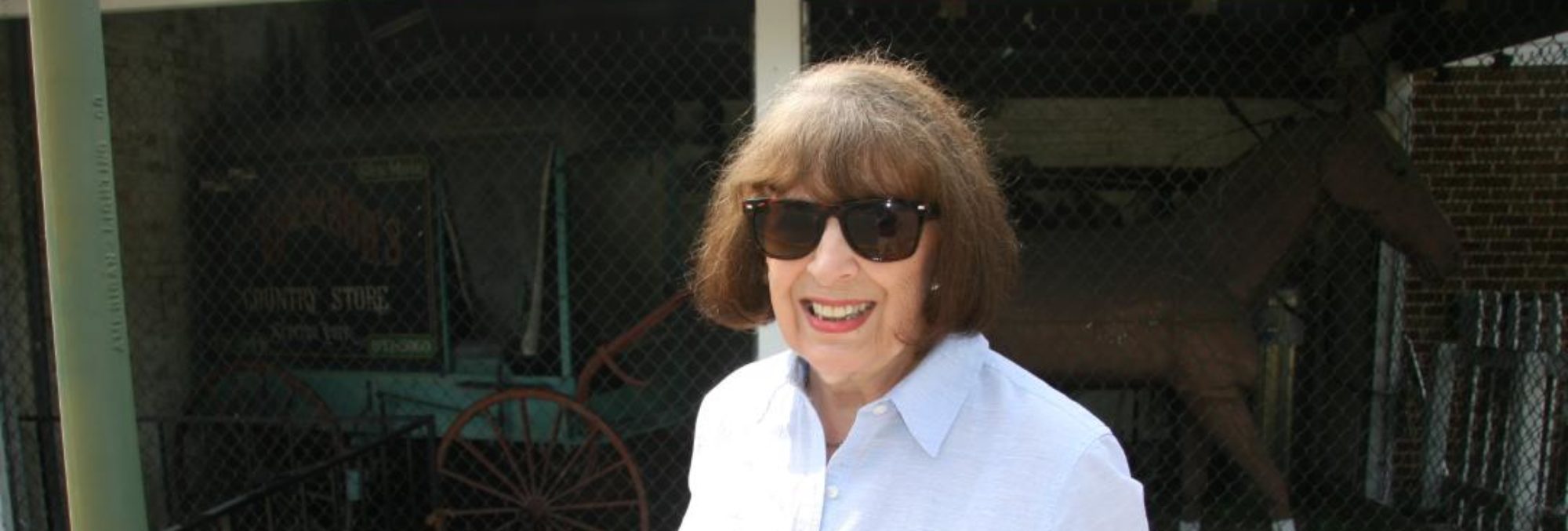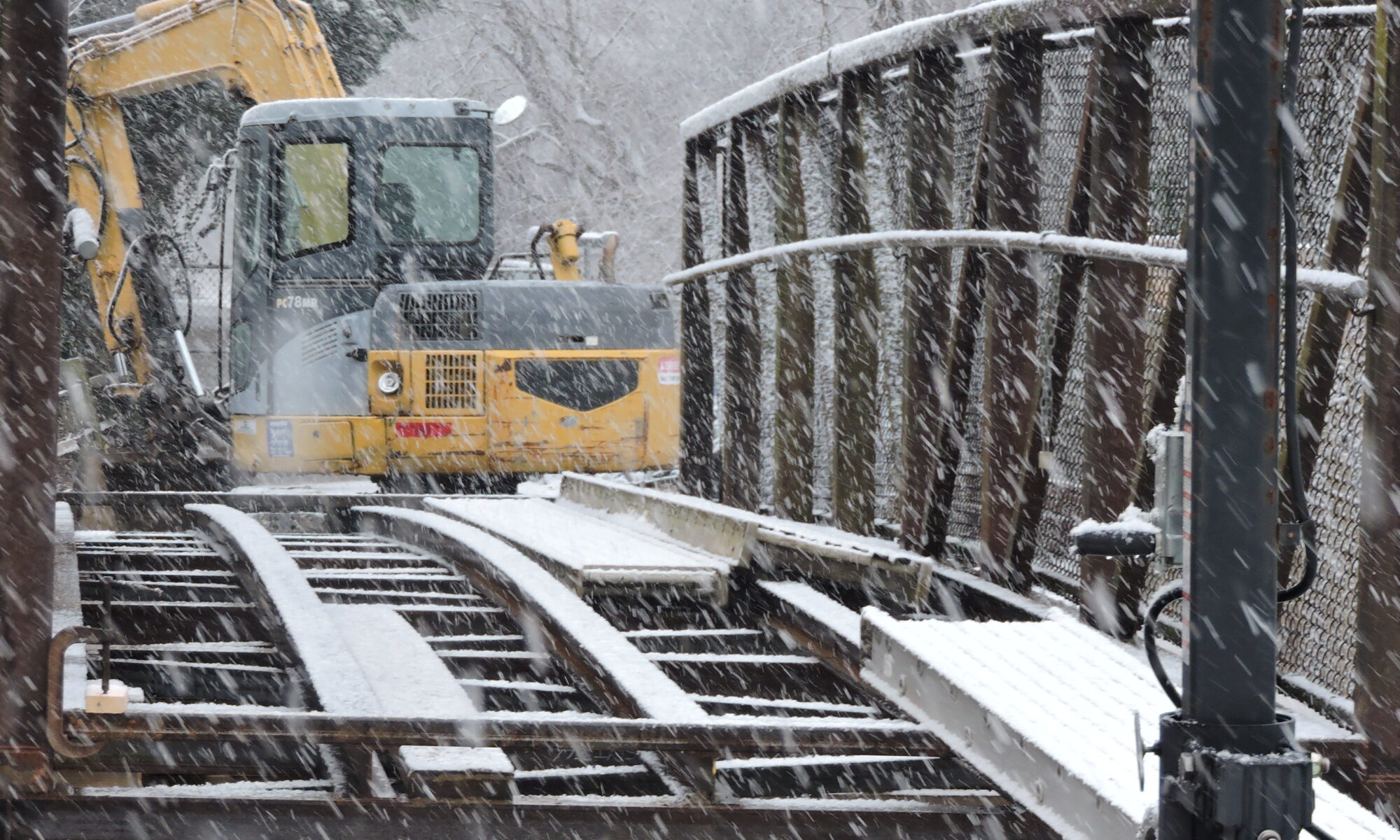Reading a copy of the Friends of Anne Arundel County Trails‘ Trail Talk we noticed that B&A Trail users are a trifle frustrated that the project to reconstruct the bridge over Joyce Lane has not been completed. Curious to know how the project is coming along, we ventured to Joyce Lane last Friday.
An Anne Arundel County Department of Recreation and Parks website B&A Trail Closures and Detours notice says work to replace the Joyce Lane Bridge began October 20, 2021 and should be completed by late February or March depending on weather delays.
With snow flying, it was obvious that work would be delayed a bit longer.
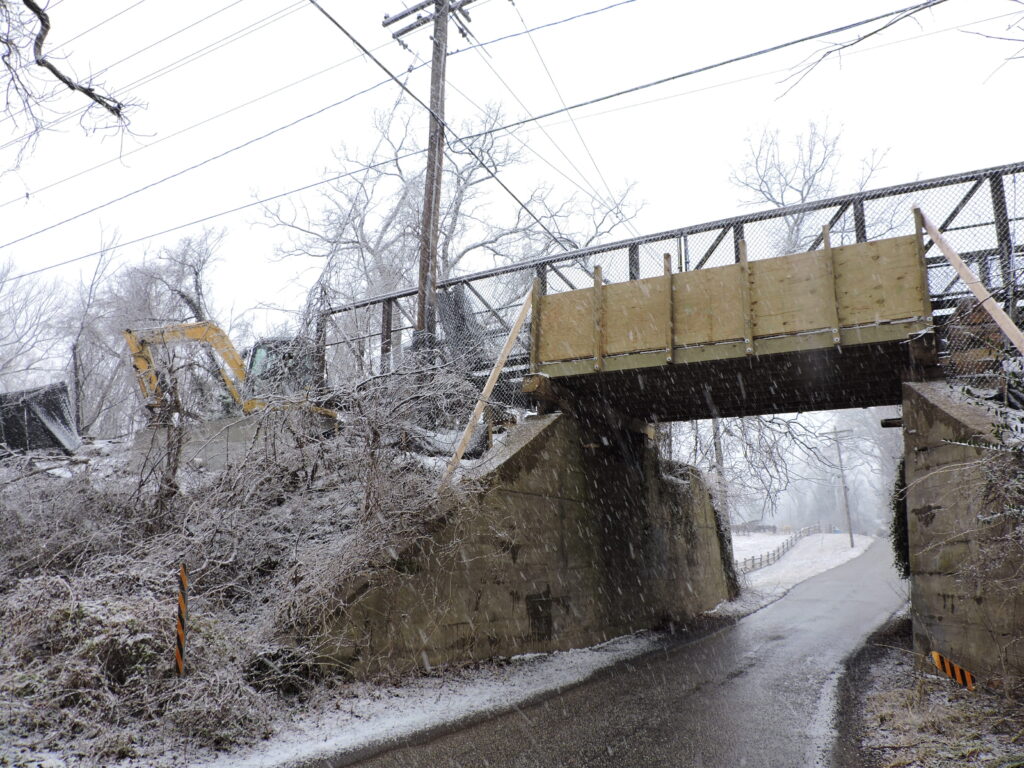
Passing beneath the structure before turning around, the view opened to a pasture where horses were grazing by a hay bin and didn’t seem to mind the icy conditions.
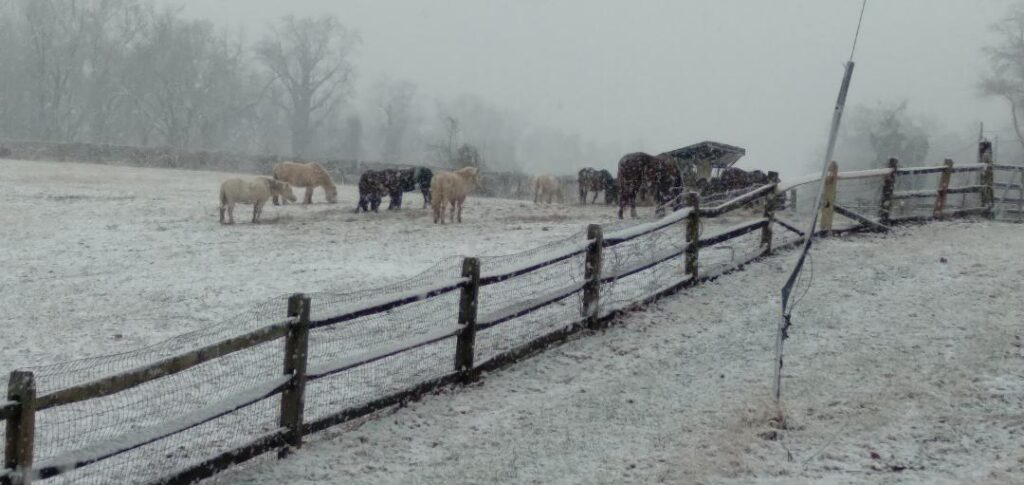
The scene reminded us that the Baltimore Annapolis Trail affords many beautiful vistas for trail users no matter what time of year.
Mounting a hill to the trail, we approached the construction from the north and were greeted by gates on both the north and south sides of the bridge with signage warning “Construction Area, Keep Out”.
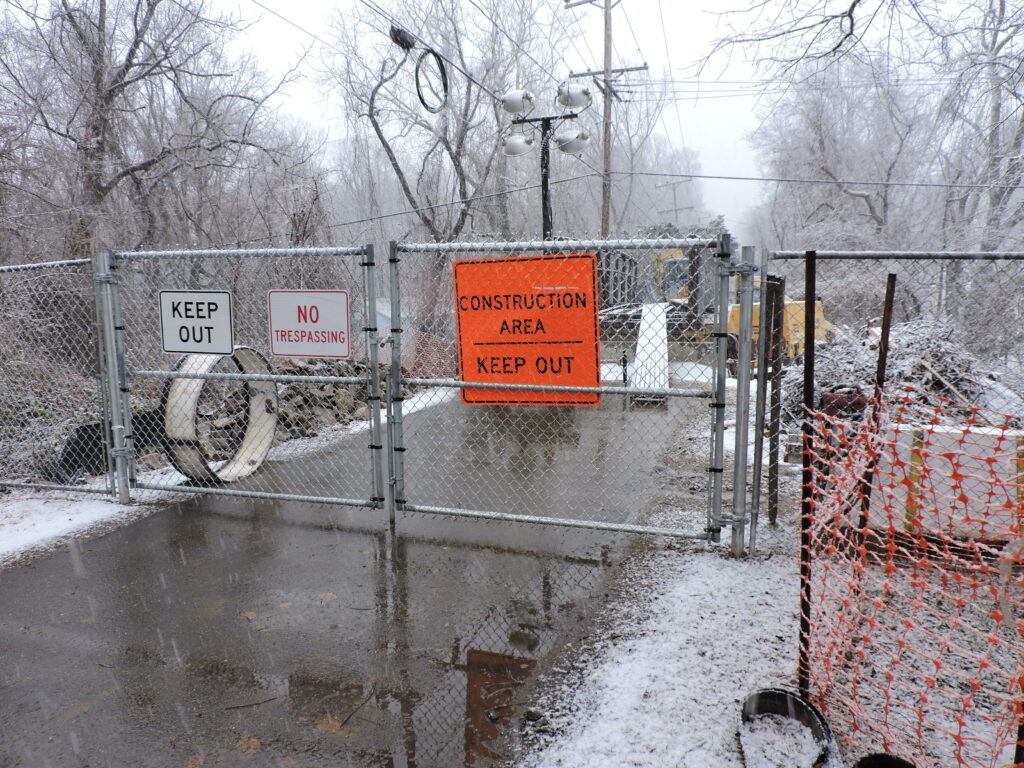
It’s understandable why trail users are disappointed to have to stop and turn back. Since its completion in 1990, the trail has been in continuous use by hikers, bikers, runners, walkers and those who use it simply to get from one place to another. According to Jack Keene, president of the Friends of Anne Arundel County Trails, the Joyce Lane Bridge is one of five built or rebuilt along the Baltimore Annapolis Trail when construction over the tracks of the original Annapolis & Baltimore Short Line Railroad began in 1985.
Running from Boulters Way in Annapolis to Dorsey Road in Glen Burnie, the route is both scenic and historic. The county spent $9 million on the project, which included paving 13.3 miles of trail and restoring two historic buildings. But before it became the B&A Trail, the artery was a railroad beloved by local residents.
To quote a B&A Trail brochure written in 1992, “For eighty-one years the railroad along the north shore of the Severn River between Baltimore and Annapolis provided passenger and freight service to northern Anne Arundel County, connecting a relatively poor, isolated backwater to the most important urban center of Maryland. With a bewildering series of name changes and company reorganizations, and operating, in turn, under steam, electric, and diesel power, it substantially altered the long-held patterns of transportation and land use in the area.”
Chartered in 1880, the Annapolis & Baltimore Short Line was constructed in 1886 and 1887. As many as 1,100 Italians and blacks with over 50 teams of horses worked to grade the bed and lay the tracks earning between $1 and $1.50 per day. All the stations were three-sided shacks including the one in Boone, Maryland which later became Severna Park (on land sold to the railroad by Thomas Boone and wife Elizabeth Linstead Boone.)
Communities soon sprang up near the tracks. Within a few years, six post offices and a number of stations were established in already existing homes/stores or they were built for the purpose. The current day Park Ranger Station & Musem at Earleigh Heights was built as Frost’s General Store in 1889 and operated as a post office as well.
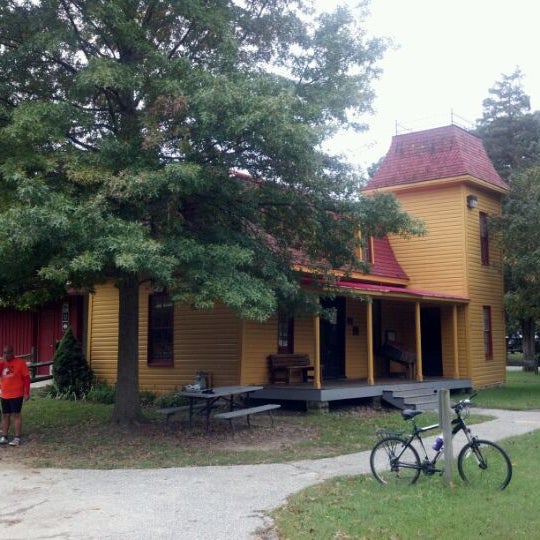
Built-for-the-purpose in 1919, the Severna Park Railroad Station replaced the earlier three-sided shack erected in 1906 and also contained a post office for a number of years. It still exists today as home to the Severna Park Model Railroad Club. Just above the station is the original rail crossing warning sign which today marks the point at which the B&A Trail crosses Riggs Avenue.
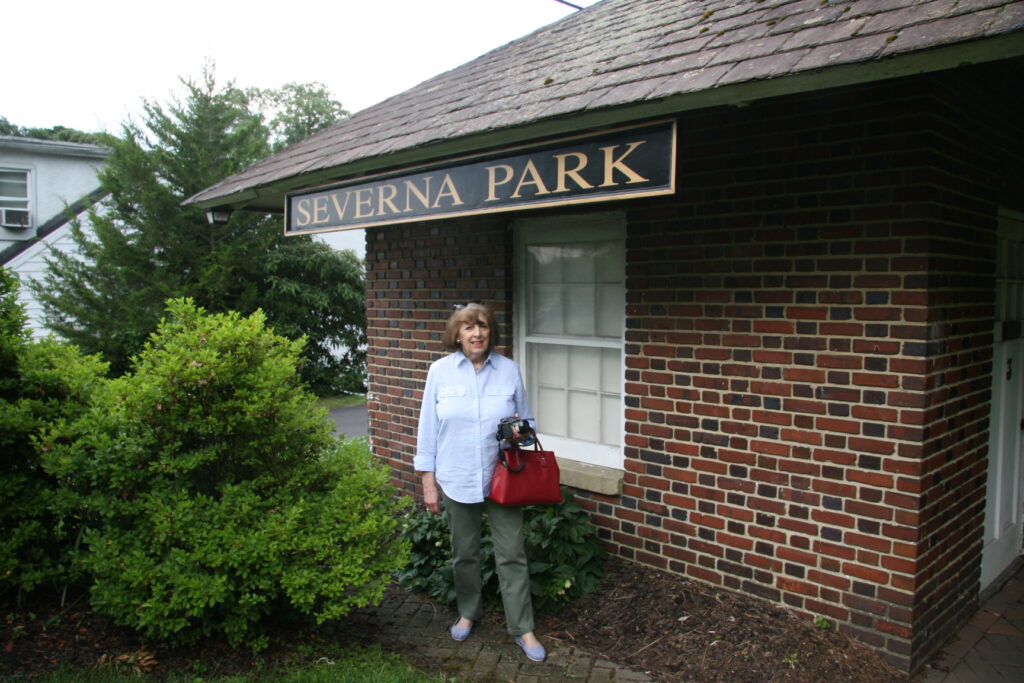
Today the former Severna Park Railroad Station is preserved 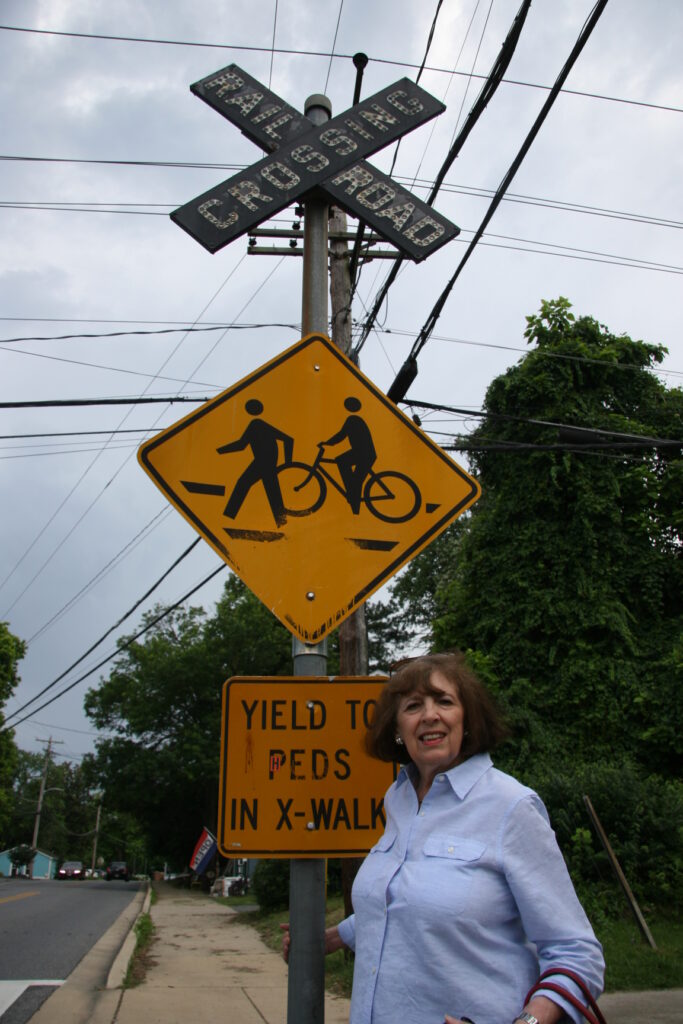
The original rail crossing warning still exists and marks the spot where the trail crosses Riggs Avenue.

Another landmark that still exists is the former substation for the railroad when it was electrified in 1908 which has been serving as the Anne Arrundell County Historical Society’s Store at Jones Station (that also houses exhibits including artifacts from Dawson’s Country Store). High tension feeders entered the building through the large holes on the top of the wall on the north side.
A company reorganization in 1894 changed the name to Baltimore & Annapolis Railroad. Merging with the Washington, Baltimore & Annapolis Electric Railroad in 1921, the company made improvements including rebuilding the trestle bridge across the Severn River. The railroad struggled through the Depression and went bankrupt in 1931. Reorganized, it became profitable again with the onset of World War II when troops were moved across the country by rail and gas rationing made it popular with the local populace.
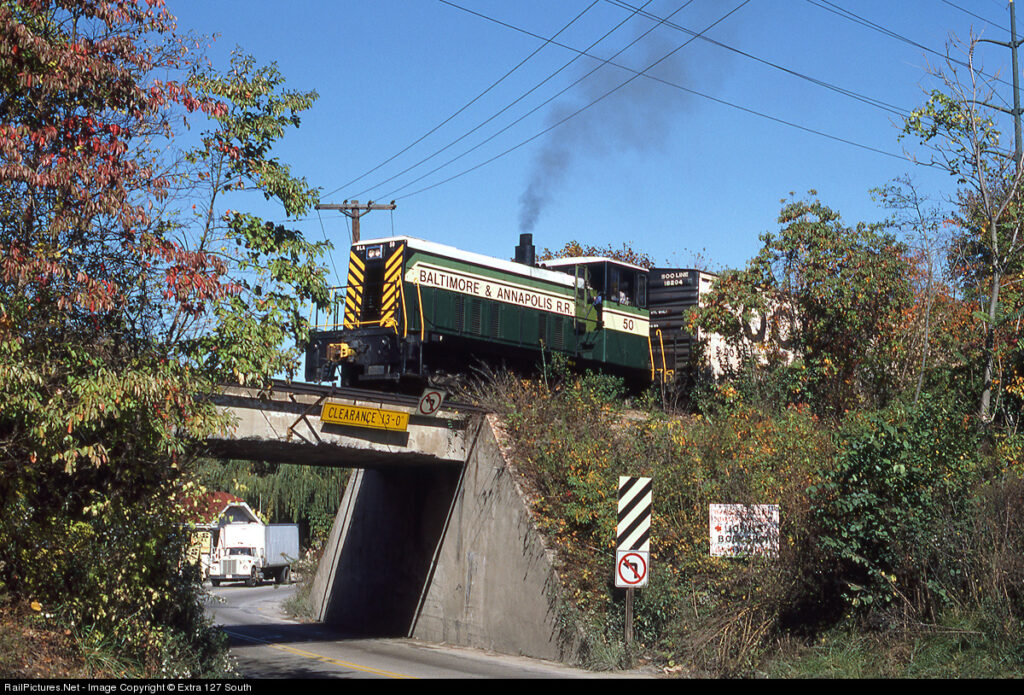
After the war, with increased demand for automobiles and the development of Ritchie Highway, passenger service for the Baltimore & Annapolis Short Line was discontinued in 1950. Freight service to Annapolis continued to Annapolis until 1968.
Keene, who is very knowledgeable about the building of the B&A Trail, noted that it was built over the railroad tracks in five phases.
“The bridge being reconstructed at Joyce Lane wasn’t original to the railroad but was replaced when the trail was constructed in the late 1980’s,” he said. “I don’t recall whether there was any steelwork left from when it was a railroad bridge. However, the two concrete abutments that you see on either side of the road when approaching from beneath were part of the original railroad bridge.”
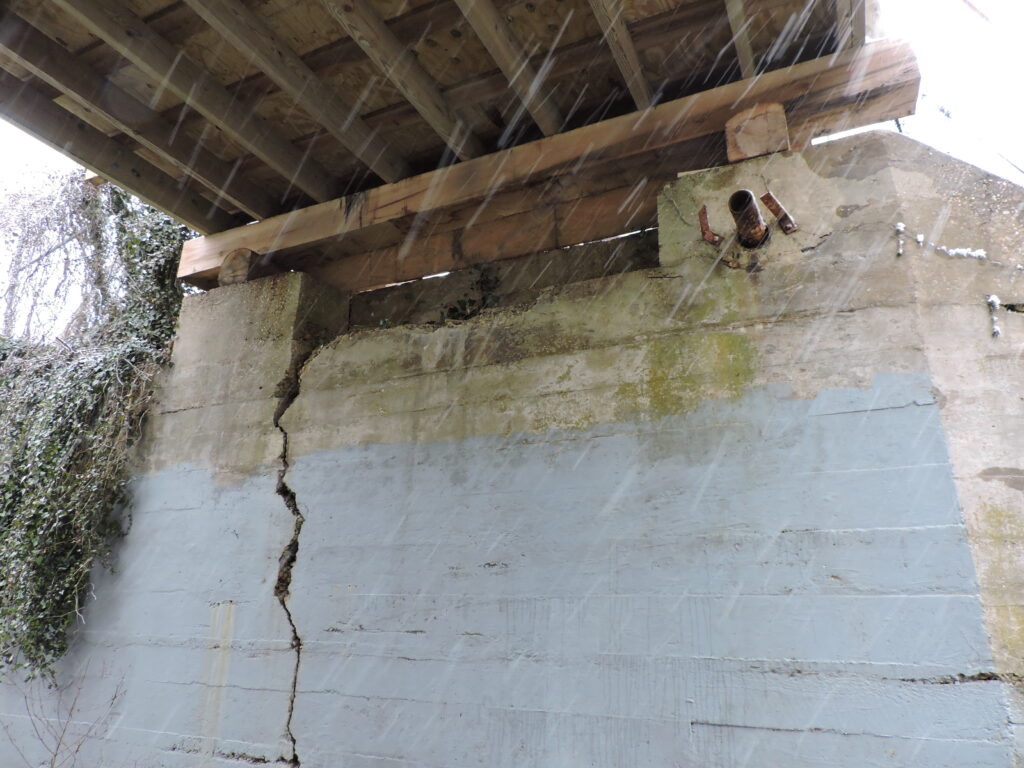
Keene added that the engineers were worried even then about how sound the abutment structures would be and decided to buy a premanufactured bridge that would be longer than the original railroad bridge. They spread-footed the bridge at each end with a concrete pad to go over top of those abutments (about six inches above them) eliminating the safety issue. Given the choice to have the abutments removed, the residents of Joyce Lane chose not to as they appreciate the added measure of privacy they afford the community.
The nearby Round Bay Bridge is the only remaining bridge completely built by the railroad. It was paved over during the late 80’s construction. For safety purposes, the Department of Recreation and Parks erected a wooden frame around it.
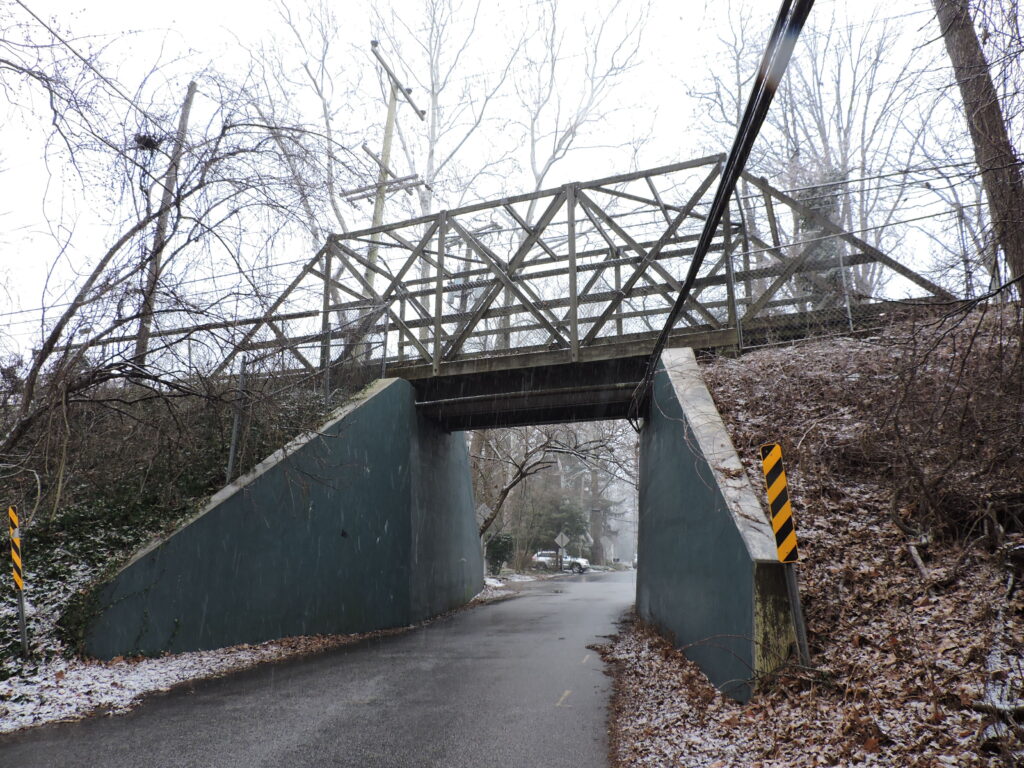
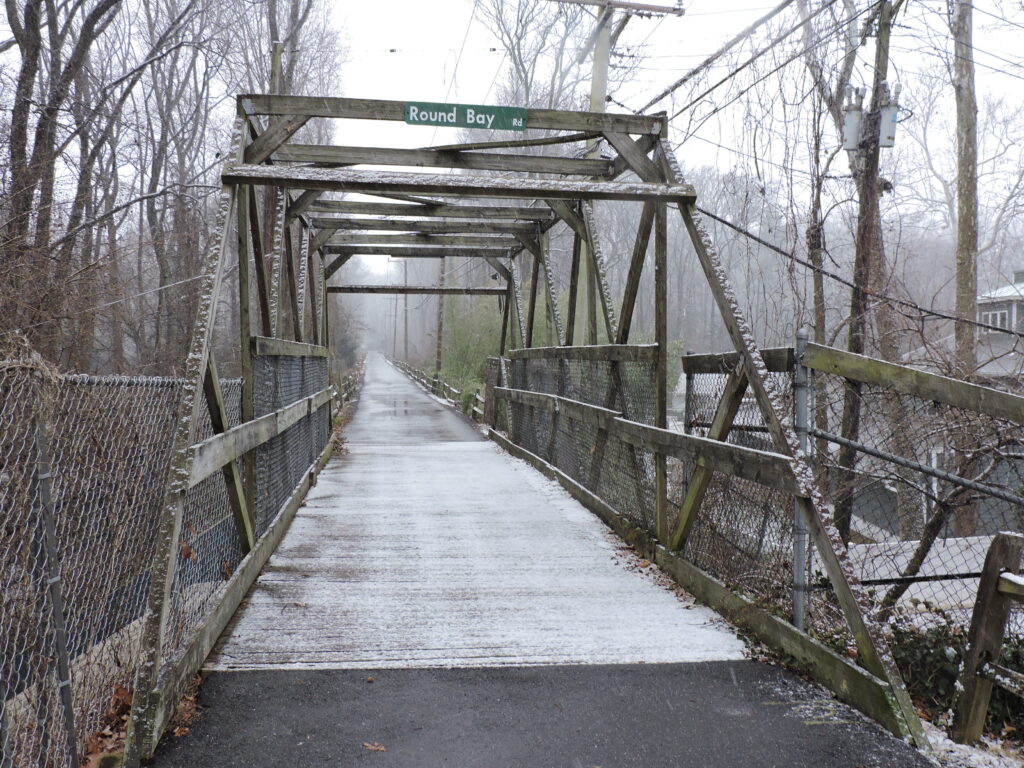
New to the trail, but not exactly new, was the Marley Creek bridge – originally a culvert that was washed entirely out during hurricane Agnes and required bridging. The Recreation and Parks Department found a historic single lane brush bridge in Missouri that was being offered for preservation. Their bid on it was accepted and they installed it across Marley Creek.
A culvert at Old County Road in Arnold also washed out in a storm by runoff required construction of a fourth bridge while the fifth bridge over East West Boulevard was built by the Department of Public Works as part of the construction of the road. One additional bridge was constructed over Route 100.
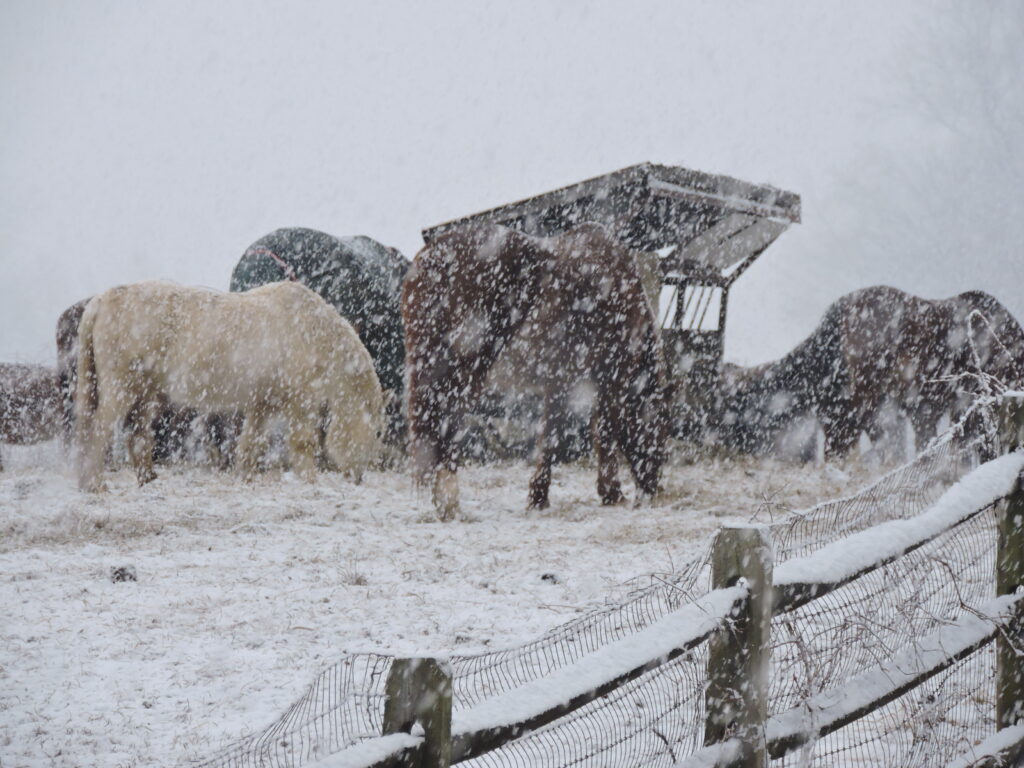
Scenes like the one above are part of the charm of the Baltimore Annapolis Trail. Viewable from the Joyce Lane Bridge, the fields populated by these horses are a reminder of the rural landscape that the B & A Railroad once traveled through. Here’s hoping that by springtime trail users will be able to cross the bridge along this historic path and gaze into the past.
